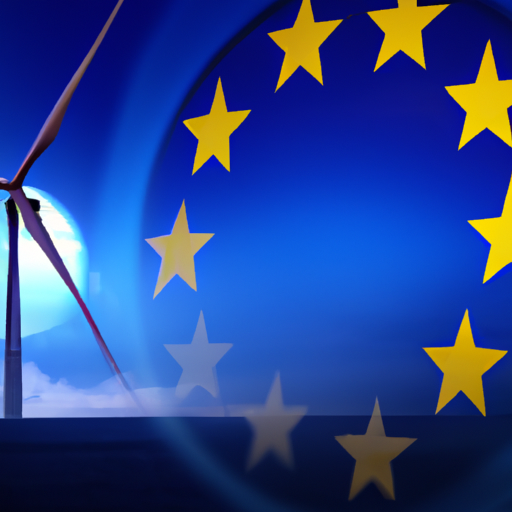The European Commission has announced the adoption of two final pillars of its “Fit for 55” legislative package, which aims to deliver on the EU’s 2030 climate targets. In line with its commitment to lead the way in climate action, the EU is taking significant steps towards shaping a green transition that benefits both its citizens and industries.
Delivering Change and Meeting Ambitious Targets
Commission President Ursula von der Leyen expressed her satisfaction with the progress made, stating that the European Green Deal is effectively reducing CO₂ emissions while prioritizing the interests of citizens and opportunities for European industries. With legislation now in place to reduce greenhouse gas emissions by at least 55% by 2030, the EU is on track to surpass this ambitious goal. This achievement sends a strong signal to Europe and its global partners that the green transition is possible and that the EU is actively fulfilling its promises.
Legally Binding Climate Targets for Key Sectors
The adoption of the revised Renewable Energy Directive and the ReFuelEU Aviation Regulation means that the EU now has legally binding climate targets that cover all major sectors of the economy. This comprehensive package includes emissions reduction targets across various sectors, a focus on boosting natural carbon sinks, an updated emissions trading system to cap emissions and generate green investments, as well as social support for citizens and small businesses.
Promoting a Level Playing Field and Green Technologies
The Carbon Border Adjustment Mechanism ensures that imported goods pay an equivalent carbon price in targeted sectors, promoting fair competition for European companies. Furthermore, the EU has updated targets for renewable energy and energy efficiency and plans to phase out new polluting vehicles by 2035. Alongside this, the EU is actively investing in charging infrastructure and alternative fuels for road transport, shipping, and aviation.
Implementation and Future Prospects
The “Fit for 55” package is a significant step towards achieving the EU’s climate objectives. The legislation will contribute to reducing EU net greenhouse gas emissions by 57% by 2030. While work continues on other pending legislative files and proposals, member states are urged to conclude negotiations promptly, particularly regarding the completion of the Energy Taxation Directive.
Revenue Generation and Social Support
Carbon pricing and annual emissions caps ensure that polluters pay their fair share, generating revenues that can be invested in the green transition. Member states will allocate 100% of their emissions trading revenues to climate and energy-related projects, including support for vulnerable citizens and small businesses through the newly-established Social Climate Fund.
Promoting Global Emissions Reductions
The Carbon Border Adjustment Mechanism supports global emissions reductions by ensuring that imported products pay a carbon price at the border. This mechanism, combined with the EU Emissions Trading System, minimizes the risk of companies relocating their production to countries with less stringent environmental standards.
Advancements in Renewable Energy, Energy Efficiency, and Transport
The revised Renewable Energy Directive sets a binding target of at least 42.5% renewable energy by 2030, significantly increasing the current target of 32%. Europe also aims to achieve 45% of renewables in its energy mix by the same year. The Energy Efficiency Directive establishes a new EU-level target to improve energy efficiency by 11.7% by 2030, with specific annual savings targets for member states and a focus on combating energy poverty. Additionally, the revised CO2 standards regulation mandates that all new cars and vans registered in Europe be zero-emission by 2035.
Deployment of Alternative Fuels and Sustainable Aviation
The Regulation for the deployment of alternative fuels infrastructure mandates the creation of electric recharging and hydrogen refueling infrastructure along European roads. This ensures that the growth of publicly accessible recharging infrastructure matches the expansion of the electric vehicle fleet. The ReFuelEU Aviation regulation promotes the use of sustainable aviation fuels, requiring aviation fuel suppliers to blend an increasing minimum share of sustainable aviation fuels with kerosene.
Next Steps and Stakeholder Engagement
The implementation of the “Fit for 55” legislation has commenced in member states, with the incorporation of these new measures into the National Energy and Climate Plans. Engaging with citizens and industry, the Commission plans to conduct dialogues, led by Executive Vice-President Maros Šefčovič, to ensure effective implementation of the European Green Deal. Furthermore, negotiations are ongoing between the European Parliament and the Council on various energy, circular economy, pollution, and nature-related laws.
European Green Deal: A Vision for the Future
The European Green Deal, introduced in December 2019, presents a growth strategy for Europe that aims to create a fair and prosperous society while achieving zero net greenhouse gas emissions by 2050. With the European Climate Law enshrining the commitment to climate neutrality by 2050 and the intermediate target of reducing net greenhouse gas emissions by at least 55% by 2030, the EU is well on its way to meeting the goals of the Paris Agreement.
For More Information: Courtesy of European Commission.
